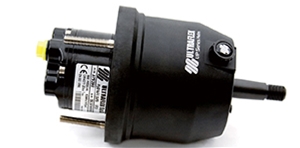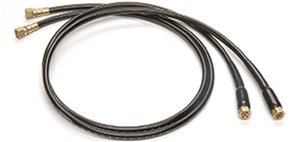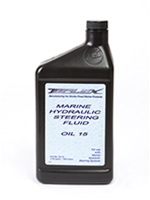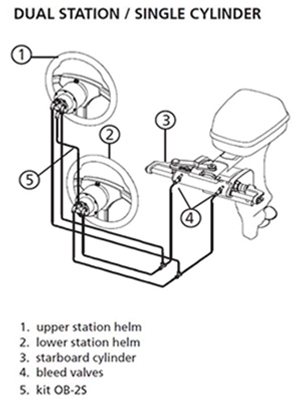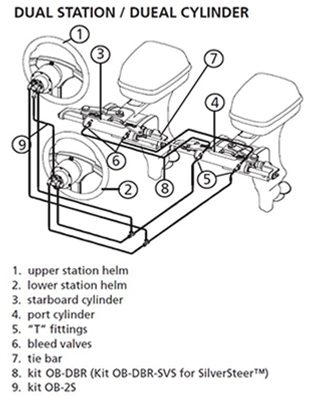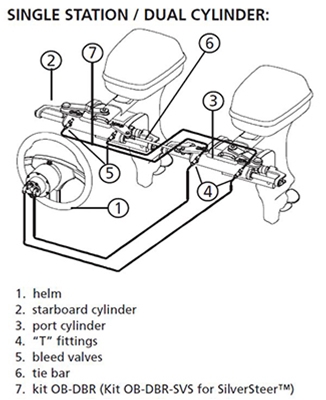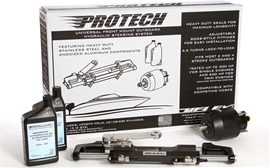
What Is Hydraulic Boat Steering
Published on October 15, 2019 by Alan Mayfield
Hydraulic Boat Steering Overview
What is Hydraulic Boat Steering?
Hydraulic Boat Steering is more popular today on mid to high horsepower outboard applications. The increased application of hydraulics has a lot to do with the increase in horsepower over the years, and the added torque that is inherent with 4 stroke outboards compared to 2 strokes. The high output torque of the 4 strokes has changed the propellers resulting in higher torque loads on the steering systems. Hydraulic systems are very efficient in dealing with all torque conditions and often provide for fingertip steering effort. Outboard systems are generally broken down into three systems; one for applications below 115 hp, one for applications below 175 hp and systems for 175 hp and above.
A hydraulic boat steering kit consists of a helm, which pumps hydraulic fluid through two hoses to a hydraulic cylinder which is mounted to an engine or rudder. While steering, hydraulic oil is pushed through hoses into two chambers within the hydraulic cylinder. Depending upon which direction you steer, one of the two chambers is filled or relieved of oil, thereby changing the course of the boat. While not actively steering, the torque (hydraulic pressure in the hoses) is held by a one way valve in the helm, which eliminates the transmission of the torque “feedback” to the steering wheel.
The number of turns from full lock-to-lock has a relationship to ease of steering. Generally speaking, the more number of turns lock-to-lock the easier the boat will be to steer and vice versa. Because of the variety of applications and handling characteristics of boats, the number of turns lock to lock is often a matter of personal preference. As a general rule, the first priority should be ease of steering, then number of turns lock to lock. However, it is not recommended to have fewer than 4 turns lock to lock on high performance boats. To calculate number of turns lock to lock simply divide the cubic inch displacement of the cylinder by the cubic inch displacement of the helm.
Other factors that can significantly affect the amount of effort to steer the system can be:
Fittings introduced between the helm and cylinder that restrict fluid efficiency
Oil viscosity
Type of hose and inside hose diameter.
Vessel speed
Trim angle
Rudder dimension, or engine power
Propeller selection
Hull type (displacement, plaining, etc.)
Sea conditions
Hydraulic Steering System Parts
A Hydraulic Steering System Consist of three parts including, a Cylinder, Helm, Hydraulic Fluid, and Hydraulic lines or pre-made hose kits. See system parts below.
|
|
|
|
Hydraulic Steering Systems Vessel Configurations
|
|
|
|
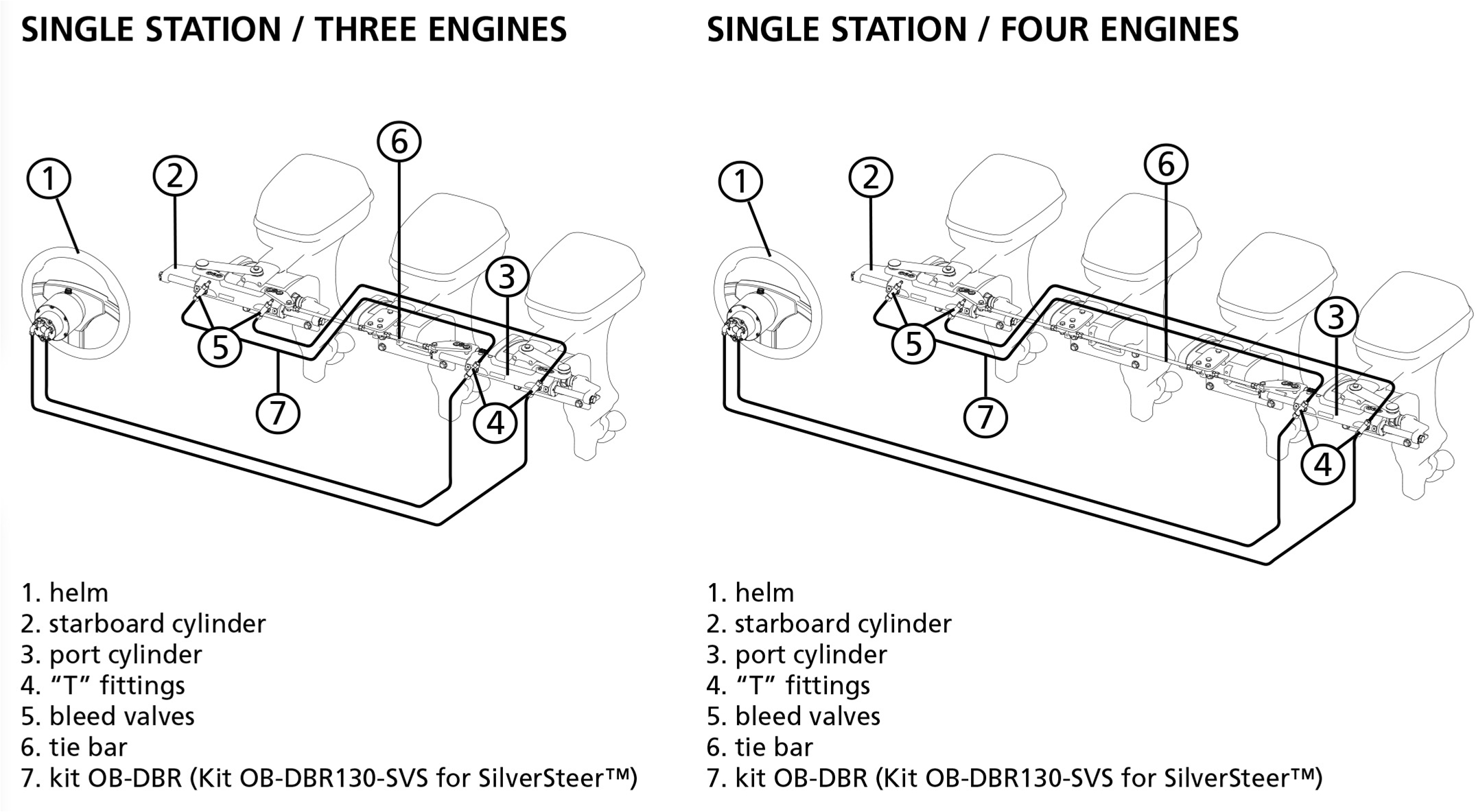
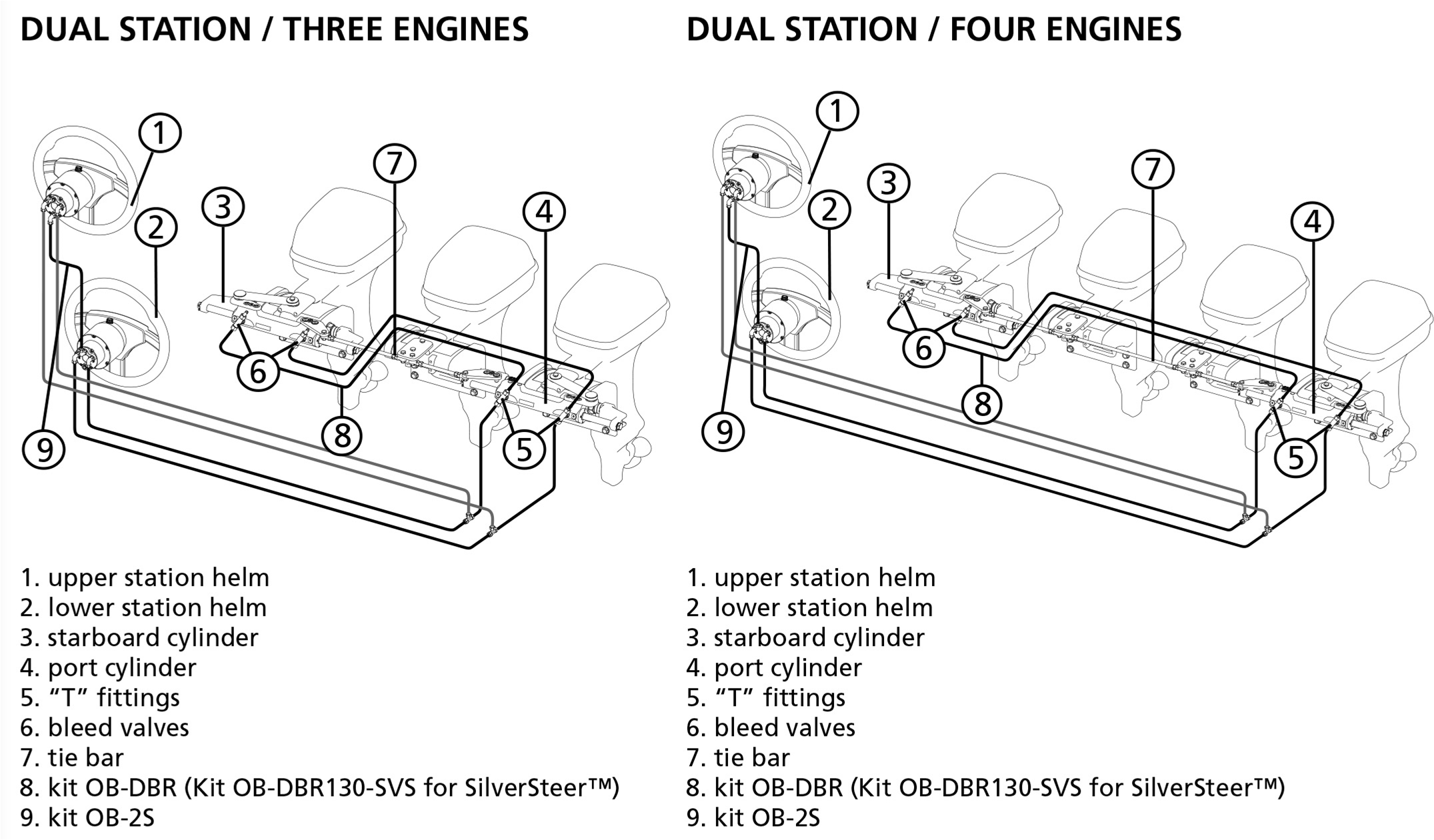
The above schematics show how Hydraulic steering systems are setup based upon vessel configuration. These schematics are just for an overview only. It is recommended that you seek out a professional marine steering system installer, for advise on what system will work for your specification.


